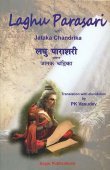Kaliyuga, Kali-yuga: 28 definitions
Introduction:
Kaliyuga means something in Buddhism, Pali, Hinduism, Sanskrit, the history of ancient India, Marathi. If you want to know the exact meaning, history, etymology or English translation of this term then check out the descriptions on this page. Add your comment or reference to a book if you want to contribute to this summary article.
Images (photo gallery)
In Hinduism
Vaishnavism (Vaishava dharma)
Source: VedaBase: Śrīmad BhāgavatamIn Kali-yuga, as stated in Śrīmad-Bhāgavatam (12.2.13), dasyu-prāyeṣu rājasu: the ruling class (rājanya) will be no better than plunderers (dasyus) because the third-class and fourth-class men will monopolize the affairs of the government. Ignoring the religious principles and brahminical rules and regulations, they will certainly try to plunder the riches of the citizens without consideration.
Source: Pure Bhakti: Bhagavad-gita (4th edition)Kaliyuga (कलियुग) refers to “present age of quarrel and hypocrisy. It lasts for 432,000 years, of which approximately five thousand have now passed (Refer to Śrīmad-Bhāgavatam Canto 12 Chapter 2)”. (cf. Glossary page from Śrīmad-Bhagavad-Gītā).
Source: Pure Bhakti: Bhajana-rahasya - 2nd EditionKaliyuga (कलियुग) refers to:—The present age of quarrel and hypocrisy that began five thousand years ago. (Also see Yuga.). (cf. Glossary page from Bhajana-Rahasya).
Source: Pure Bhakti: Brhad BhagavatamrtamKaliyuga (कलियुग) refers to:—The present age of quarrel and hypocrisy which began five thousand years ago; the fourth of a cycle of four ages that repeat to form universal time. (cf. Glossary page from Śrī Bṛhad-bhāgavatāmṛta).

Vaishnava (वैष्णव, vaiṣṇava) or vaishnavism (vaiṣṇavism) represents a tradition of Hinduism worshipping Vishnu as the supreme Lord. Similar to the Shaktism and Shaivism traditions, Vaishnavism also developed as an individual movement, famous for its exposition of the dashavatara (‘ten avatars of Vishnu’).
Purana and Itihasa (epic history)
Source: archive.org: Puranic EncyclopediaKaliyuga (कलियुग).—See under Manvantara.
Source: archive.org: Nilamata Purana: a cultural and literary studyKaliyuga (कलियुग) refers to a time period consisting of 32,000 years according to the Nīlamatapurāṇa. The passage of the sun through one sign of the zodiac, we are informed, is called a solar month. Two months make a season, three seasons an Ayana and two Ayanas a year. Four lacs and thirty two thousand years make Kaliyuga. Twice as much as Kaliyuga is Dvāpara, thrice is Tretā and four yugas make one Caturyuga and seventy one Caturyugas make one Manvantara.
Source: archive.org: Shiva Purana - English TranslationKaliyuga (कलियुग) is a specific period of time, as mentioned in the Śivapurāṇa 1.1.—Accordingly, “at the advent of the terrible age of Kali [kaliyuga] men have become devoid of merits. They are engaged in evil ways of life. They have turned their faces from truthful avocations. They are engaged in caluminating others. They covet other men’s wealth. Their attention is diverted to other men’s wives. Injuring others has become their chief aim. They view the physical body as the soul, deluded as they are; they are atheists of mere brutish sense; they hate their parents; their wives are goddesses unto them; they are slaves to lust”.
Source: Cologne Digital Sanskrit Dictionaries: The Purana IndexKaliyuga (कलियुग).—The features of the yuga, and its discontents. Removed by hearing the story of Kṛṣṇa, as the Ṛṣis did in the Naimiṣa forest. The source of unrighteousness.1 Form of Hari worshipped in.2 Reflections on the conduct of castes and observance of dharma by persons. kali becomes kṛta after the avatār of Kalki. When the Saptaṛṣis traverse Maghas, and on the day when Kṛṣṇa left the earth for Heaven then began Kali of 1200 divine years. Grows in strength commencing with Nanda. The actual beginning was when Kṛṣṇa left for Vaikuṇṭha; a description of the yuga. Worship of Hari by kīrtana.3 Its advent was recognised by Mucukunda from the smallness of the men, plants, trees, etc., which he saw after he woke up from his long sleep.4 Deterioration of Vedic dharma and rise of Pākhaṇḍas. Incarnation of Pramati in the form of a horse who puts down all heretics and the unrighteous.5 Predominance of heretics and Śūdras in;6 106,000 or 360,000-duration of; its sandhyāṃśa 1,000 years.7 Noted for theft; see tṛṣya;8 dāna the chief act and tamas the chief quality.9 description of the evils of: bad rule and decay of civilization and morality; age of man 23 years; began with Parīkṣit when the two first stars of seven Ṛṣis were in Magha; its duration according to the calculation of men 360,800. Then comes kṛta.10
- 1) Bhāgavata-purāṇa I. 1. 10, 16 & 21; 12. 26; 15. 36-7; XI. 5. 20, 31-42; Vāyu-purāṇa 58. 30-73.
- 2) Matsya-purāṇa 142. 17-27; 273. 49; Vāyu-purāṇa 99. 429.
- 3) Bhāgavata-purāṇa XII. chap. 2 & 3.
- 4) Ib. X. 52. 2.
- 5) Brahmāṇḍa-purāṇa II. 29. 23-34; 31. 5-102; III. 14. 46. 74. 207-241; Matsya-purāṇa 144. 30-88.
- 6) Vāyu-purāṇa 78. 36.
- 7) Vāyu-purāṇa 32. 63; 99. 264; 102. 4. Matsya-purāṇa 273. 27-33, 45. 50.
- 8) Brahmāṇḍa-purāṇa II. 7. 59.
- 9) Vāyu-purāṇa 8. 66.
- 10) Viṣṇu-purāṇa IV. 24. 71-96, 97, 109. 114-15.

The Purana (पुराण, purāṇas) refers to Sanskrit literature preserving ancient India’s vast cultural history, including historical legends, religious ceremonies, various arts and sciences. The eighteen mahapuranas total over 400,000 shlokas (metrical couplets) and date to at least several centuries BCE.
Jyotisha (astronomy and astrology)
Source: Wikibooks (hi): Sanskrit Technical TermsKaliyuga (कलियुग).—The last of the four ages in a mahāyuga, equal to 432,000 years. Indian cosmology holds that the current Kaliyuga began on 18 February 3102 BCE. Note: Kali-yuga is a Sanskrit technical term used in ancient Indian sciences such as Astronomy, Mathematics and Geometry.

Jyotisha (ज्योतिष, jyotiṣa or jyotish) refers to ‘astronomy’ or “Vedic astrology” and represents the fifth of the six Vedangas (additional sciences to be studied along with the Vedas). Jyotisha concerns itself with the study and prediction of the movements of celestial bodies, in order to calculate the auspicious time for rituals and ceremonies.
Shaktism (Shakta philosophy)
Source: Google Books: ManthanabhairavatantramKaliyuga (कलियुग) or Kali refers to the age associated with Kāmarūpa, one of the sacred seats (pīṭha), according to the Manthānabhairavatantra, a vast sprawling work that belongs to a corpus of Tantric texts concerned with the worship of the goddess Kubjikā.—The Kumārikākhaṇḍa displays most of the many new developments that took place after the revelation of the Kubjikāmatatantra including those concerning the sacred seats. [...] Although the seats are the same five described in the Kubjikāmatatantra and its expansions, their contents [i.e., the Kaliyuga] and the beings who inhabit them are quite different.

Shakta (शाक्त, śākta) or Shaktism (śāktism) represents a tradition of Hinduism where the Goddess (Devi) is revered and worshipped. Shakta literature includes a range of scriptures, including various Agamas and Tantras, although its roots may be traced back to the Vedas.
Vastushastra (architecture)
Source: Shodhganga: Elements of Art and Architecture in the Trtiyakhanda of the Visnudharmottarapurana (vastu)Kaliyuga (कलियुग) refers to the age of growth of unlawful activities in the society, according to the Viṣṇudharmottarapurāṇa, an ancient Sanskrit text which (being encyclopedic in nature) deals with a variety of cultural topics such as arts, architecture, music, grammar and astronomy.—It is clearly stated that the requirement of making of temple is most important in the Kaliyuga. Because, in the three other yugas i.e.,, Kṛta, Tretā and Dvāpara; people could realize the existence of Gods and had tried directly to connect themselves with the supreme spirit. But in the Kaliyuga it is totally impossible due to the growth of unlawful activities in the society.

Vastushastra (वास्तुशास्त्र, vāstuśāstra) refers to the ancient Indian science (shastra) of architecture (vastu), dealing with topics such architecture, sculpture, town-building, fort building and various other constructions. Vastu also deals with the philosophy of the architectural relation with the cosmic universe.
General definition (in Hinduism)
Source: WikiPedia: HinduismKalī Yuga (कली युग): Kalī Yuga (lit. Age of Kali, also known as The Age of Darkness), is one of the four stages of development that the world goes through as part of the cycle of Yugas, as described in Hindu scriptures, the others being Dwapara Yuga, Treta Yuga, and Satya Yuga.
In Buddhism
General definition (in Buddhism)
Source: Wisdom Library: Dharma-samgrahaKaliyuga (कलियुग) or simply Kali refers to the “dark age” and represents the last of the “four ages” (yuga) as defined in the Dharma-saṃgraha (section 88). The Dharma-samgraha (Dharmasangraha) is an extensive glossary of Buddhist technical terms in Sanskrit (e.g., kali-yuga). The work is attributed to Nagarjuna who lived around the 2nd century A.D.
India history and geography
Source: archive.org: South Indian FestivitiesThe kaliyuga refers to the last of the four yugas.—The anniversary of the first day of the Kali-yuga is the full-moon day in Magha. Kalki will be the incarnation in this age. On all these anniversary days a bath in some sacred river and charity are enjoined. On these days water mixed with sesamum seeds should be regularly presented to the progenitors of mankind (Pitris).
The complete year of the Kaliyuga passed, is arrived at by adding 3101 to the Christian year. Further by adding 3044 to the year in the Vikrama era and 3179 to the year in the Saka era the corresponding Kaliyuga year is arrived at.
Source: academia.edu: Who were the HunasEpoch of Kaliyuga.—Since Surya Siddhanta gained popularity after 5 th century BCE, Indians started believing that the epoch of Kaliyuga commenced in 3102 BC. In fact, Latadeva proposed the epoch of Kaliyuga (3102 BC) in his Surya Siddhanta considering the great conjunction. Mahabharata text and Aryabhata clearly inform us that the epoch of Kaliyuga commenced before Mahabharata war. Evidently, the ancient epoch of Kaliyuga commenced in 3176 BCE when the Saptarshis entered Magha nakshatra. Bhagavata tradition firmly believed that Kaliyuga cannot begin during the lifetime of Sri Krishna. Therefore, Bhagavata Purana proposed that Kaliyuga commenced after the death of Sri Krishna. Evidently, Bhagavata Purana’s epoch of Kaliyuga was mythical and not traditional.
Source: What is India: Inscriptions of the ŚilāhārasKaliyuga (कलियुग) is mentioned in the “Ṭhāṇā plates of Arikesarin”.—Accordingly, “In Kṛta. Treta and Dvāpara Ages penance is highly praised. (But) in the Kali Age (yuga), sages recommend only charity... The sages say that in the Kali Age neither knowledge nor penance is as fruitful as charity... And it has been declared by Vyāsa: Gold was the first product of fire, land belongs to Viṣṇu, and cows are offsprings of the Sun. He who gives gold, a cow and land gives thereby the three worlds (of Fire, Viṣṇu and the Sun.).”.
These copper plates (mentioning Kaliyuga) were found in digging for some works at the Fort of Tanna (Ṭhāṇā) the capital of Salset. The object of the present plates was to record the grant, by the Śilāhāra king Arikesarin, of three villages in the Vatsarāja-viṣaya to the family priest and teacher Tikkapaiya on the occasion of a lunar eclipse which occurred on the fifteenth tithi of the bright fortnight of Kārttika in the Śaka year 939.

The history of India traces the identification of countries, villages, towns and other regions of India, as well as mythology, zoology, royal dynasties, rulers, tribes, local festivities and traditions and regional languages. Ancient India enjoyed religious freedom and encourages the path of Dharma, a concept common to Buddhism, Hinduism, and Jainism.
Languages of India and abroad
Pali-English dictionary
Source: BuddhaSasana: Concise Pali-English Dictionarykaliyuga : (m.) the age of vice and misery, i.e. the last of the four period of an aeon.
Source: Sutta: The Pali Text Society's Pali-English DictionaryKaliyuga refers to: (nt.) one of the 4 (or 8) ages of the world, the age of vice, misery and bad luck; it is the age in which we are Sāsv 4, 44, Vinl 281;
Note: kaliyuga is a Pali compound consisting of the words kali and yuga.

Pali is the language of the Tipiṭaka, which is the sacred canon of Theravāda Buddhism and contains much of the Buddha’s speech. Closeley related to Sanskrit, both languages are used interchangeably between religions.
Marathi-English dictionary
Source: DDSA: The Molesworth Marathi and English Dictionarykaliyuga (कलियुग).—n (S) The fourth age. See kali.
Source: DDSA: The Aryabhusan school dictionary, Marathi-Englishkaliyuga (कलियुग).—n The 4th age.
Marathi is an Indo-European language having over 70 million native speakers people in (predominantly) Maharashtra India. Marathi, like many other Indo-Aryan languages, evolved from early forms of Prakrit, which itself is a subset of Sanskrit, one of the most ancient languages of the world.
Sanskrit dictionary
Source: DDSA: The practical Sanskrit-English dictionaryKaliyuga (कलियुग).—the Kali age; Manusmṛti 1.85.
Derivable forms: kaliyugam (कलियुगम्).
Kaliyuga is a Sanskrit compound consisting of the terms kali and yuga (युग).
Source: Cologne Digital Sanskrit Dictionaries: Shabda-Sagara Sanskrit-English DictionaryKaliyuga (कलियुग).—n.
(-gaṃ) The Kali, the present or iron age: see kali. E. kali, and yuga an age.
Source: Cologne Digital Sanskrit Dictionaries: Monier-Williams Sanskrit-English DictionaryKaliyuga (कलियुग):—[=kali-yuga] [from kali] n. the Kali age (See above), [Manu-smṛti i, 85; Mahābhārata etc.]
Source: Cologne Digital Sanskrit Dictionaries: Yates Sanskrit-English DictionaryKaliyuga (कलियुग):—[kali-yuga] (gaḥ) 1. n. The iron age.
[Sanskrit to German]
Sanskrit, also spelled संस्कृतम् (saṃskṛtam), is an ancient language of India commonly seen as the grandmother of the Indo-European language family (even English!). Closely allied with Prakrit and Pali, Sanskrit is more exhaustive in both grammar and terms and has the most extensive collection of literature in the world, greatly surpassing its sister-languages Greek and Latin.
Kannada-English dictionary
Source: Alar: Kannada-English corpusKaliyuga (ಕಲಿಯುಗ):—[noun] the last of the four mythological divisions of age of the universe, the present one (of 4,32,000 years, beginning from 3102 B.C.).
Kannada is a Dravidian language (as opposed to the Indo-European language family) mainly spoken in the southwestern region of India.
Nepali dictionary
Source: unoes: Nepali-English DictionaryKaliyuga (कलियुग):—n. Mythol. name of the last and worst of four ages; the present/iron age at the end of which the world will be destroyed; dark/iron age;
Nepali is the primary language of the Nepalese people counting almost 20 million native speakers. The country of Nepal is situated in the Himalaya mountain range to the north of India.
See also (Relevant definitions)
Starts with: Kaliyugaca Brahmam, Kaliyugadharma, Kaliyugadharmadharma, Kaliyugalaya, Kaliyugamahatmya, Kaliyugantika, Kaliyugashtaka, Kaliyukam.
Full-text (+154): Karmayuga, Kalki, Tishya, Yuga, Kataiyukam, Karmaja, Poyyukam, Maru, Kali, Pushya, Kaliyaptam, Caturyuga, Panjara, Nal-am-poyyukam, Kritayuga, Jharjharaka, Dvaparayuga, Skandapurana, Communication, Tapasya.
Relevant text
Search found 103 books and stories containing Kaliyuga, Kali-yuga; (plurals include: Kaliyugas, yugas). You can also click to the full overview containing English textual excerpts. Below are direct links for the most relevant articles:
The Padma Purana (by N.A. Deshpande)
Chapter 7 - Span of Life in the Four Yugas < [Section 3 - Svarga-khaṇḍa (section on the heavens)]
Chapter 26 - Conduct in the Four Yugas < [Section 7 - Kriyāyogasāra-Khaṇḍa (Section on Essence of Yoga by Works)]
Chapter 38 - The End of Vena’s Reign < [Section 2 - Bhūmi-khaṇḍa (section on the earth)]
Tiruvaymoli (Thiruvaimozhi): English translation (by S. Satyamurthi Ayyangar)
Pasuram 5.2.3 < [Section 2 - Second Tiruvaymoli (Polika Polika)]
Introduction to Section 5.2 < [Section 2 - Second Tiruvaymoli (Polika Polika)]
Pasuram 5.2.10 < [Section 2 - Second Tiruvaymoli (Polika Polika)]
A Manual of Khshnoom (by Phiroz Nasarvanji Tavaria)
Appendix I < [Appendices]
Mahabharata (English) (by Kisari Mohan Ganguli)
Section CCXXXI < [Mokshadharma Parva]
Section LXVI < [Bhagavat-Gita Parva]
Section CXLVIII < [Tirtha-yatra Parva]
Bhajana-Rahasya (by Srila Bhaktivinoda Thakura Mahasaya)
Text 1 < [Chapter 1 - Prathama-yāma-sādhana (Niśānta-bhajana–śraddhā)]
Text 3 < [Chapter 1 - Prathama-yāma-sādhana (Niśānta-bhajana–śraddhā)]
Text 35 < [Chapter 1 - Prathama-yāma-sādhana (Niśānta-bhajana–śraddhā)]
Puranic encyclopaedia (by Vettam Mani)
Related products




